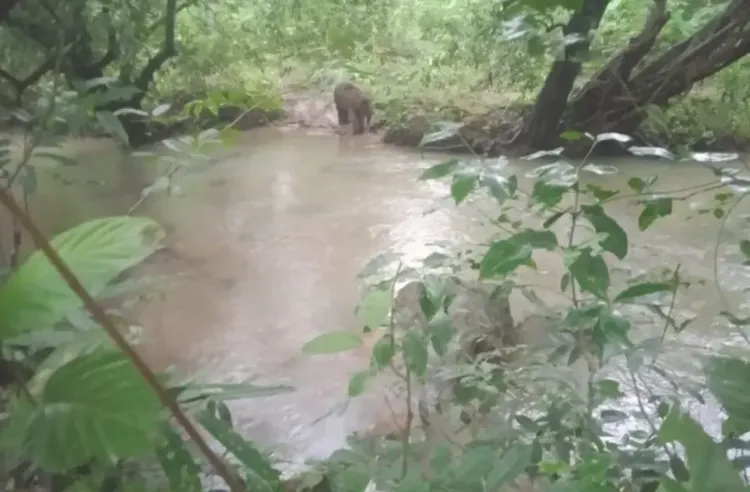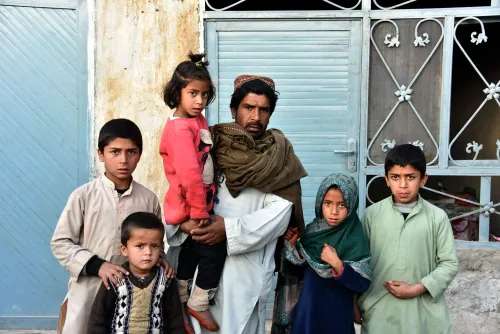How Did an Elephant Sustain Severe Injuries from a Maoist IED Blast in Jharkhand’s Saranda Forest?

Synopsis
Key Takeaways
- A young elephant suffered severe injuries from an IED in Jharkhand's Saranda forest.
- Forest officials and veterinarians collaborated for her rescue and treatment.
- The incident highlights the dangers faced by wildlife in conflict zones.
- Previous similar incidents have raised alarm over wildlife safety.
- Coordinated efforts are needed to prevent future tragedies.
Chaibasa (Jharkhand), Oct 6 (NationPress) A young wild elephant has suffered serious injuries after accidentally triggering an Improvised Explosive Device (IED) in the Saranda forest of West Singhbhum district, according to officials on Monday.
This female elephant, estimated to be between 10 and 12 years old, incurred a significant injury to her right foreleg.
The blast reportedly severed parts of her foot, resulting in deep wounds and exposed flesh. Forest officials stated that the animal was discovered in extreme distress and unable to walk.
Upon receiving alerts from nearby villagers, a collaborative team of the Forest Department and veterinarians promptly arrived at the scene on Monday morning.
After nearly four hours of careful and deliberate efforts, the team successfully approached the injured elephant and provided initial medical assistance.
“She received antibiotics, pain relievers, and anti-inflammatory treatments,” said veterinarian Dr. Sanjay Kumar, who oversaw the medical team.
“Her condition remains critical, but we are committed to stabilizing her and relocating her to a safer environment for further treatment,” he continued.
Officials noted that the elephant accepted food mixed with medication, including a banana blend containing sedatives and antibiotics. Forest guards are maintaining 24/7 surveillance to prevent infection and monitor her condition.
Senior Forest Department officials indicated that the explosion was likely caused by an IED planted by Maoists targeting security personnel in the Saranda forest, an area notorious as a Maoist stronghold.
This incident is not unprecedented, as elephants have previously been harmed by Maoist explosives in Saranda. On July 5, a six-year-old elephant, affectionately known as “Gadru” by locals, succumbed to injuries from a similar blast.
That elephant had sustained injuries in an explosion on June 24 and endured pain for several days before passing away, despite extensive rescue efforts from a veterinary team associated with a wildlife organization based in Gujarat.
“We urge all agencies to work together to identify and neutralize IEDs in forested regions,” a senior forest officer stated.










